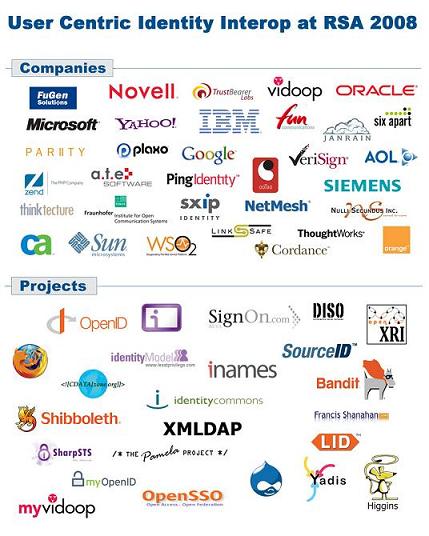Vikram Kumar works for New Zealand's State Services Commission on the All-of-government Authentication Programme. As he puts it, “… that means my working and blog lives intersect….” In this discussion of the Third Law of Identity, he argues that in New Zealand, where the population of the whole country is smaller than that of many international cities, people may consider the government to be a “justifiable party” in private sector transactions:
A recent article in CR80News called Social networking sites have little to no identity verification got me thinking about the Laws of Identity, specifically Justifiable Parties, “Digital identity systems must be designed so the disclosure of identifying information is limited to parties having a necessary and justifiable place in a given identity relationship.”
The article itself makes points that have been made before, i.e. on social networking sites “there’s no way to tell whether you’re corresponding with a 15-year-old girl or a 32-year-old man…The vast majority of sites don’t do anything to try to confirm the identities of members. The sites also don’t want to absorb the cost of trying to prove the identity of their members. Also, identifying minors is almost impossible because there isn’t enough information out there to authenticate their identity.”
In the US, this has thrown up business opportunities for some companies to act as third party identity verifiers. Examples are Texas-based Entrust, Dallas-based RelyID, and Atlanta-based IDology. They rely on public and financial records databases and, in some cases, government-issued identification as a fallback.
Clearly, these vendors are Justifiable Parties.
What about the government? It is the source of most of the original information. Is the government a Justifiable Party?
In describing the law, Kim Cameron says “Today some governments are thinking of operating digital identity services. It makes sense (and is clearly justifiable) for people to use government-issued identities when doing business with the government. But it will be a cultural matter as to whether, for example, citizens agree it is “necessary and justifiable” for government identities to be used in controlling access to a family wiki or connecting a consumer to her hobby or vice.” [emphasis added]
So, in the US, where there isn’t a high trust relationship between people and the government, the US government would probably not be a Justifiable Party. In other words, if the US government was to try and provide social networking sites with the identity of its members, the law of Justifiable Parties predicts that it would fail.
This is probably no great discovery- most Americans would have said the conclusion is obvious, law of Justifiable Parties or not.
Which then leads to the question of other cultures…are there cultures where government could be a Justifiable Party for social networking sites?
To address, I think it is necessary to distinguish between the requirements of social networking sites that need real-world identity attributes (e.g. age) and the examples that Kim gives- family wiki, connecting a consumer to her hobby or vice- where authentication is required (i.e. it is the same person each time without a reliance on real-world attributes).
Now, I think government does have a role to play in verifying real-world identity attributes like age. It is after all the authoritative source of that information. If a person makes an age claim and government accepts it, government-issued documents reflects the accepted claim as, what I call, an authoritative assertion that other parties accept.
The question then is whether in some high trust societies, where there is a sufficiently high trust relationship between society and government, can the government be a Justifiable Party in verifying the identity (or identity attributes such as age alone) for the members of social networking societies?
I believe that the answer is yes. Specifically, in New Zealand where this trust relationship exists, I believe it is right and proper for government to play this role. It is of course subject to many caveats, such as devising a privacy-protective system for the verification of identity or identity attributes and understanding the power of choice.
In NZ, igovt provides this. During public consultation held late last year about igovt, people were asked whether they would like to use the service to verify their identity to the private sector (in addition to government agencies). In other words, is government a Justifiable Party?
The results from the public consultation are due soon and will provide the answer. Based on the media coverage of igovt so far, I think the answer, for NZ, will be yes, government is a Justifiable Party.
It is noteworthy that if citizens give them the go-ahead, the State Services Commission is prepared to take on the responsibility and risk of managing all aspects of the digital identity of New Zealand's citizens . The combined governement and commercial identities the Commission administers will attract attackers. Effectively, the Commission will be handling “digital explosives” of a greater potency than has so far been the case anywhere in the world.
At the same time, the other Laws of Identity will continue to hold. The Commission will need to work extra hard to achieve data minimization after having collapsed previously independent contexts together. I think this can be done, but it requires tremendous care and use of the most advanced policies and technologies.
To be safe, such an intertwined system must, more than any other, minimize disclosure and aggregation of information. And more than any other, it must be resilient against attack.
If I lived in New Zealand I would be working to see that the Commission's system is based on a minimal disclosure technology like U-Prove or Idemix. I would also be working to make sure the system avoids “redirection protocols” that give the identity provider complete visibility into how identity is used. (Redirection protocols unsuitable for this usage include SAML and WS-Federation, as well as OpenID). Finally, I would make phishing resistance a top priority. In short, I wouldn't touch this kind of challenge without Information Cards and very distributed, encrypted information storage.

